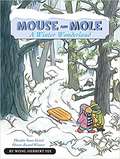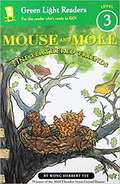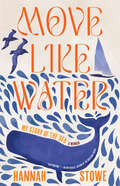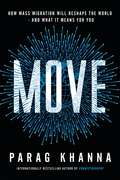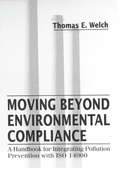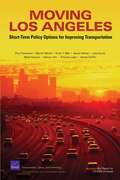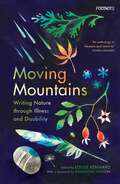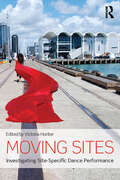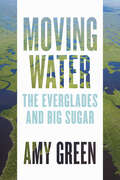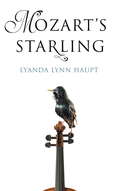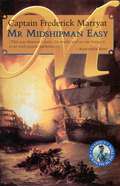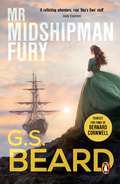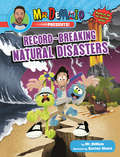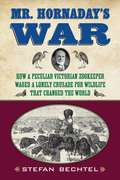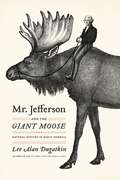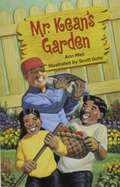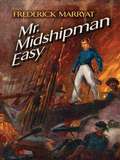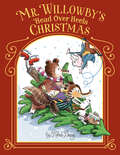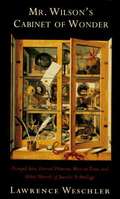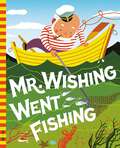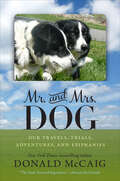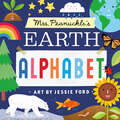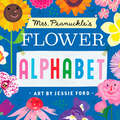- Table View
- List View
Mouse and Mole: A Winter Wonderland (Fountas & Pinnell LLI Blue #Level L)
by Wong YeeBest friends Mouse and Mole enjoy playing in the snow with Sno-Mouse and Sno-Mole, two more best friends.
Mouse and Mole: Fine Feathered Friends (Fountas & Pinnell LLI Blue #Level L)
by Marjorie WeinmanWong Herbert YeeIt is a blustery spring day, and Mouse and Mole are very excited. They are going to go bird watching! They are planning to make bird books! Mouse and Mole pack paper and crayons and hurry outside. It turns out, birds are not so easy to watch. Together, they come up with a plan to get closer to the birds... a plan that includes glue and feathers.
Move Like Water: My Story Of The Sea
by Hannah Stowe"A sensuous book, more felt than described, more described than explained, more painted than penned: part memoir, part journal and. . . . part natural mystery tour."—Carl Safina A book to sweep you away from the shore, into a wild world of water, whale, storm, and starlight— to experience what it’s like to sail for weeks at a time with life set to a new rhythm. As a young girl, Hannah Stowe was raised at the tide’s edge on the Pembrokeshire coast of Wales, falling asleep to the sweep of the lighthouse beam. Now in her midtwenties, working as a marine biologist and sailor, Stowe draws on her professional experiences sailing tens of thousands of miles in the North Sea, North Atlantic, Mediterranean, Celtic Sea, and the Caribbean to explore the human relationship with wild waters. Why is it, she asks, that she and so many others have been drawn to life at sea—and what might the water around us be able to teach us? Braiding her powerful and deeply personal narrative and illustrations with stories of six keystone marine creatures—the fire crow, sperm whale, wandering albatross, humpback whale, shearwater, and the barnacle—Stowe invites readers to fall in love, as she has, with the sea and those that call it home, and to discover the majesty, wonder, and vulnerability of the underwater world. For fans of Rachel Carson and Annie Dillard, Move Like Water: My Story of the Sea is an inspiring, heartfelt hymn to the sea, a testament to finding and following a dream, and an unforgettable introduction to a deeply gifted nature writer of a new generation.
Move: How Mass Migration Will Reshape the World – and What It Means for You
by Parag KhannaWhere will you live in 2030? Where will your children settle in 2040? What will the map of humanity look like in 2050?In the 60,000 years since people began colonising the continents, a recurring feature of human civilisation has been mobility - the constant search for resources and stability. Seismic global events - wars and genocides, revolutions and pandemics - have only accelerated the process. The map of humanity isn't settled, not now, not ever.As climate change tips toward full-blown crisis, economies collapse, governments destabilise and technology disrupts, we're entering a new age of mass migrations - one that will scatter both the dispossessed and the well-off. Which areas will people abandon and where will they resettle? Which countries will accept or reject them? As today's world population, which includes four billion restless youth, votes with their feet, what map of human geography will emerge?Here global strategy advisor Parag Khanna provides an illuminating and authoritative vision of the next phase of human civilisation - one that is both mobile and sustainable. As the book explores, in the years ahead people will move to where the resources are and technologies will flow to the people who need them, returning us to our nomadic roots while building more secure habitats. Move is a fascinating look at the deep trends that are shaping the most likely scenarios for the future. Most importantly, it guides each of us as we determine our optimal location on humanity's ever-changing map.
Moving Beyond Environmental Compliance: A Handbook for Integrating Pollution Prevention with ISO 14000
by Thomas Elliott WelchSince the U.S. Department of Energy (as well as other Federal and International agencies) will stop granting contracts to companies that fail to comply with 14000 standards, the search is on for any book that will make 14000 compliance easier. Tom Welch, with more than 20 years experience in environmental engineering and project management, provides such a book! Moving Beyond Environmental Compliance: A Handbook for Integrating Pollution Prevention with ISO 14000 is the first text to combine the best aspects of Pollution Prevention (P2), Total Quality Management (TQM), and ISO 14000, into a comprehensive "how-to" guidebook for achieving environmental compliance.The ever-increasing cost of environmental compliance as it is passed onto consumers, cuts into the profit margin and reduces an organization's competitive edge. At the very least, compliance cuts into operating budgets, and directs attention away from the primary business of an organization. This handbook demystifies the implementation of effective environmental management systems as described in the ISO 14000, and clarifies the application of effective pollution prevention methodologies that can drastically reduce this compliance burden.
Moving Los Angeles: Short-term Policy Options for Improving Transportation
by Endy Y. Min Martin Wachs Liisa Ecola Paul Sorensen Aaron KofnerLos Angeles has the worst traffic congestion in the country. Excessive traffic congestion detracts from quality of life, is economically wasteful and environmentally damaging, and exacerbates social-justice concerns. The authors of this book recommend strategies for reducing congestion in Los Angeles County that could be implemented and produce significant improvements within about five years.
Moving Mountains: Writing Nature through Illness and Disability
by Louise KenwardA first-of-its-kind anthology of nature writing by authors living with chronic illness and physical disability.Through twenty-five pieces, the writers of Moving Mountains offer a vision of nature that encompasses the close up, the microscopic, and the vast. From a single falling raindrop to the enormity of the north wind, this is nature experienced wholly and acutely, written from the perspective of disabled and chronically ill authors. Moving Mountains is not about overcoming or conquering, but about living with and connecting, shifting the reader's attention to the things easily overlooked by those who move through the world untroubled by the body that carries them. Contributors: Isobel Anderson, Kerri Andrews, Polly Atkin, Khairani Barokka, Victoria Bennett, Feline Charpentier, Cat Chong, Eli Clare, Dawn Cole, Lorna Crabbe, Kate Davis, Carol Donaldson, Alec Finlay, Jamie Hale, Jane Hartshorn, Hannah Hodgson, Sally Huband, Rowan Jaines, Dillon Jaxx, Louise Kenward, Abi Palmer, Louisa Adjoa Parker, Alice Tarbuck, Nic Wilson
Moving Sites: Investigating Site-Specific Dance Performance
by Victoria HunterMoving Sites explores site-specific dance practice through a combination of analytical essays and practitioner accounts of their working processes. In offering this joint effort of theory and practice, it aims to provide dance academics, students and practitioners with a series of discussions that shed light both on approaches to making this type of dance practice, and evaluating and reflecting on it. The edited volume combines critical thinking from a range of perspectives including commentary and observation from the fields of dance studies, human geography and spatial theory in order to present interdisciplinary discourse and a range of critical and practice-led lenses through which this type of work can be considered and explored. In so doing, this book addresses the following questions: · How do choreographers make site-specific dance performance? · What occurs when a moving body engages with site, place and environment? · How might we interpret, analyse and evaluate this type of dance practice through a range of theoretical lenses? · How can this type of practice inform wider discussions of embodiment, site, space, place and environment? This innovative and exciting book seeks to move beyond description and discussion of site-specific dance as a spectacle or novelty and considers site-dance as a valid and vital form of contemporary dance practice that explores, reflects, disrupts, contests and develops understandings and practices of inhabiting and engaging with a range of sites and environments. Dr Victoria Hunter is Senior Lecturer in Dance at the University of Chichester.
Moving Water: The Everglades and Big Sugar
by Amy GreenA riveting story of environmental disaster and political intrigue, Moving Water exposes how Florida's clean water is threatened by dirty power players and the sugar cane industry.Only a century ago, nearly all of South Florida was under water. The Everglades, one of the largest wetlands in the world, was a watery arc extending over 3 million acres. Today, that wetland ecosystem is half of its former self, supplanted by housing for the region's exploding population and over 700,000 acres of crops, including the nation's largest supply of sugar cane. Countless canals, dams, and pump stations keep the trickle flowing, but rarely address the cascade of environmental consequences, including dangerous threats to a crucial drinking water source for a full third of Florida's residents. In Moving Water, environmental journalist Amy Green explores the story of unlikely conservation heroes George and Mary Barley, wealthy real estate developers and champions of the Everglades, whose complicated legacy spans from fisheries in Florida Bay to the political worlds of Tallahassee and Washington. At the center of their surprising saga is the establishment and evolution of the Comprehensive Everglades Restoration Plan (CERP), a $17 billion taxpayer-funded initiative aimed at reclaiming this vital ecosystem. Green explains that, like the meandering River of Grass, the progress of CERP rarely runs straight, especially when it comes up against the fierce efforts of sugar-growing interests, or "Big Sugar," to obstruct the cleanup of fertilizer runoff wreaking havoc with restoration. This engrossing exposé tackles some of the most important issues of our time: Is it possible to save a complex ecosystem such as the Everglades—or, once degraded, are such ecological wonders gone forever? What kind of commitments—economic, scientific, and social—will it take to rescue our vulnerable natural resources? What influences do special interests wield in our everyday lives, and what does it take to push real reform through our democracy? A must-read for anyone fascinated by stories of political intrigue and the work of environmental crusaders like Erin Brockovich, as well as anyone who cares about the future of Florida, this book reveals why the Everglades serve as a model—and a warning—for environmental restoration efforts worldwide.
Moving Words About a Flower
by K. C. HayesWords tumble, leap, and fly in this clever shape poem about a resilient dandelion.The inspiring story of a dandelion that survives against all odds, ingeniously told through shape poems (also called "concrete poems") full of visual surprises. When it rains, letters fall from the sky; and when seeds scatter, words FLY!Each playful page will have readers looking twice. The back of the book includes more information about the life cycle of the humble, incredible dandelion.
Mozart's Starling
by Lyanda Lynn HauptOn May 27th, 1784, Wolfgang Amadeus Mozart met a flirtatious little starling who sang (an improved version of!) the theme from his Piano Concerto Number 17 in G to him. Knowing a kindred spirit when he met one, Mozart wrote "That was wonderful" in his journal and took the bird home to be his pet. For three years Mozart and his family enjoyed the uniquely delightful company of the starling until one April morning when the bird passed away.In 2013, Lyanda Lynn Haupt, author of Crow Planet, rescued her own starling, Carmen, who has become a part of her family. In Mozart's Starling, Haupt explores the unlikely bond between one of history's most controversial characters and one of history's most notoriously disliked birds. Part natural history, part story, Mozart's Starling will delight readers as they learn about language, music, and the secret world of starlings.
Mr Midshipman Easy
by Capt. Frederick MarryatA rollicking sea adventure, set in the time of the Napoleonic Wars, this book follows the escapades of a young midshipman who enters the King's service with some ideas that run badly afoul of the standards of naval discipline!
Mr Midshipman Fury: a rollicking, lively naval page-turner set during the French Revolutionary Wars which will capture you from the very first page
by G.S. BeardFans of Hornblower and Sharpe will love this captivating and compelling nautical adventure from much loved author G.S.Beard. Guaranteed to stir into life even the most sluggish of readers!'If you like sea stories, you will enjoy this, and even if you think you don't but enjoy things like Sharpe, it might just convert you' - HISTORICAL NOVELS REVIEW'Excellent gripping story gives you little time to put the book down' -- ***** Reader review'Read almost overnight, difficult to put down, a memorable yarn' -- ***** Reader review'A proper page turner' -- ***** Reader review'A brilliant read, I was hooked from the beginning to the end' -- ***** Reader review'I felt like I was on the high seas with them!' -- ***** Reader review*************************************************************1792: the start of the French Revolutionary Wars.A shadow hangs over John Thomas Fury in this his first voyage as a midshipman aboard the 32-gun frigate Amazon. The son of a violent and unstable brig commander who drove his crew to mutiny, Fury finds himself an outcast onboard and working doubly hard to prove that he isn't cursed like his father.Redemption arrives when Amazon reaches Bombay, only to discover that ships of the East India Company have disappeared, including the Company's warships. Somewhere in the Indian Ocean a very powerful privateer is at work and the Governor despatches Amazon to find and destroy her.Soon afterwards Amazon is in a desperate fight for her life against a much stronger foe. In such crucibles of fire are the officers in His Majesty's Service forged.Can Fury cover himself in glory and banish the shadows of the past are forever?Fury's adventures continue in Lieutenant Fury.
Mr. DeMaio Presents!: Based on the Hit YouTube Series!
by Mike DeMaioMr. DeMaio Presents! = STEM + (Jokes x Fun) --Publishers WeeklyFollow along with Mr. DeMaio and his comical crew as they explore the world and beyond in search of the most destructive disasters to date!Hurricanes, tornadoes, tsunamis ... oh my! In the first installment of the Mr. DeMaio Presents! series, YouTube sensation Mr. DeMaio and his crew unearth all the facts for record-breaking natural disasters that have occured on planet Earth ... and even a few in outer space! With full color photographs and illustrations, this book from popular YouTuber (over 290k subscribers) and science teacher Mr. DeMaio will keep kids entertained while educating!
Mr. Hornaday's War: How a Peculiar Victorian Zookeeper Waged a Lonely Crusade for Wildlife That Changed the World
by Stefan BechtelHe was complex, quirky, pugnacious, and difficult. He seemed to create enemies wherever he went, even among his friends. A fireplug of a man who stood only five feet eight inches in his stocking feet, he had an outsized ambition to make his mark on the world. And he did. William Temple Hornaday (1854-1937) was probably the most famous conservationist of the nineteenth century, second only to his great friend and ally Theodore Roosevelt. Hornaday's great passion was protecting wild things and wild places, and he spent most of his adult life in a state of war on their behalf, as a taxidermist and museum collector; as the founder and first director of the National Zoo in Washington, DC; as director of the Bronx Zoo for thirty years; and as the author of nearly two dozen books on conservation and wildlife. But in Mr. Hornaday's War, the long-overdue biography of Hornaday by journalist Stefan Bechtel, the grinding contradictions of Hornaday's life also become clear. Though he is credited with saving the American bison from extinction, he began his career as a rifleman and trophy hunter who led "the last buffalo hunt" into the Montana Territory. And what happened in 1906 at the Bronx Zoo, when Hornaday displayed an African man in a cage, shows a side of him that is as baffling as it is repellent. This gripping new book takes an honest look at a fascinating and enigmatic man.
Mr. Jefferson and the Giant Moose: Natural History in Early America
by Lee Alan DugatkinIn the years after the Revolutionary War, the fledgling republic of America was viewed by many Europeans as a degenerate backwater, populated by subspecies weak and feeble. Chief among these naysayers was the French Count and world-renowned naturalist Georges-Louis Leclerc de Buffon, who wrote that the flora and fauna of America (humans included) were inferior to European specimens. Thomas Jefferson--author of the Declaration of Independence, U. S. president, and ardent naturalist--spent years countering the French conception of American degeneracy. His Notes on Virginia systematically and scientifically dismantled Buffon's case through a series of tables and equally compelling writing on the nature of his home state. But the book did little to counter the arrogance of the French and hardly satisfied Jefferson's quest to demonstrate that his young nation was every bit the equal of a well-established Europe. Enter the giant moose. The American moose, which Jefferson claimed was so enormous a European reindeer could walk under it, became the cornerstone of his defense. Convinced that the sight of such a magnificent beast would cause Buffon to revise his claims, Jefferson had the remains of a seven-foot ungulate shipped first class from New Hampshire to Paris. Unfortunately, Buffon died before he could make any revisions to his Histoire Naturelle,but the legend of the moose makes for a fascinating tale about Jefferson's passion to prove that American nature deserved prestige. In Mr. Jefferson and the Giant Moose,Lee Alan Dugatkin vividly recreates the origin and evolution of the debates about natural history in America and, in so doing, returns the prize moose to its rightful place in American history.
Mr. Kean's Garden (Into Reading, Level O #21)
by Ann Weil Scott GotoNIMAC-sourced textbook <p><p> Remember to mix ashes in with the dirt when you're planting potatoes! That can't be right, can it? This is one of the things that Josela and Alberto must find out when an unfortunate accident puts them in charge of Mr. Kean's garden.
Mr. Midshipman Easy
by Frederick Marryat John HarlandIn this stirring tale from the days of wooden ships, a young sailor enters the king's service with some firm but untried egalitarian notions. "Equality Jack" -- known formally as Mr. Midshipman Easy -- is initiated into the rigid hierarchy of the Royal Navy during the Napoleonic Wars. His adventures were recounted in 1836 by the founder and master of naval fiction, Captain Frederick Marryat (1792-1848), who entered the service as a fourteen-year-old midshipman and resigned twenty-four years later to devote himself to writing. He based this novel on his own experiences sailing with Lord Thomas Cochrane, the real-life model for Horatio Hornblower and Jack Aubrey. Marrayat combines a sharp wit and sense of irony with realism born of firsthand knowledge of seafaring life. Joseph Conrad praised his works as "enthralling," adding, "His greatness is undeniable." Virginia Woolf declared, "Marryat has the power to set us in the midst of ships and men and sea and sky, all vivid, credible, authentic." This low-priced Dover edition of Marryat's classic includes 37 illustrations and features an Introduction by author John Harland, an expert on maritime literature.
Mr. Moon
by Michael ParaskevasFans of Little Owl&’s Night and Kitten&’s First Full Moon will want to cuddle up with this charming bedtime story that answers the question: What does Mr. Moon do when you&’re fast asleep? There is a lot of work to be done before the sun greets the dawn. But with the help of Mr. Moon&’s light, all the creatures of the night are able to do their jobs—cloud fluffers are fluffing, crooning crickets are performing, and cows are jumping over the moon. All night long, Mr. Moon keeps watch, making sure the world is ready for a new day when you awake. &“Better not read this at bedtime: curious children will want to see all that Mr. Moon does.&” —Kirkus Reviews
Mr. Willowby's Head Over Heels Christmas (Mr. Willowby)
by Robert BarryThe beloved classic Mr. Willowby's Christmas Tree gets a sequel!Mr. Willowby's Christmas Tree has been a holiday favorite since 1963. Now, its generations of fans can read a new Mr. Willowby story, thanks to the discovery of a long lost manuscript and sketches by the creator Robert Barry, lovingly brought to life in a thrilling new picture book. On Christmas Eve, Mr. Willowby finds himself in a predicament when his Christmas tree delivery gets stuck in a snowdrift. But hope arrives in the form of Barnaby Bear and his woodland friends, who embark on a thrilling mountainside adventure to bring the perfect tree to Mr. Willowby&’s parlor. Their journey is filled with laughter, surprises, and the true magic of Christmas, making this story a perfect addition to any holiday collection.An afterword to the book by Robert Barry's son illuminates his father's acclaimed career and provides details about the exciting discovery of this forgotten work.Also available: Mr. Willowby's Christmas Tree
Mr. Wilson's Cabinet of Wonder: Pronged Ants, Horned Humans, Mice on Toast, and Other Marvels of Jurassic Technology
by Lawrence WeschlerWriting with great style and humor, Weschler guides the readers through the Museum of Jurassic Technology and through the mind of its curator, David Wilson, a man of unusual imagination who mounts exhibits such as spore-inhaling ants, bats deploying ultraviolet frequencies, peach-pit carvings, and other exhibits that seem the manifest definition of bizarre.
Mr. Wishing Went Fishing (G&D Vintage)
by Irma WildeDiscover a treasure trove of beautifully illustrated books with our new series, G&D Vintage! Featuring books from our Wonder Books line originally published in the 1940s, 50s, and 60s, there’s something for every reader in these timeless stories accompanied by classic illustrations.Mr. Wishing decides to go fishing for a pet fish and finds Skipper, a perfect companion. But Skipper needs a friend! Mr. Wishing goes on another rowboat jaunt, but all he manages to catch are a starfish and a crab, which are not the ideal fish bowl companions for Skipper. Finally, Mr. Wishing brings home another fish, Flipper, and Skipper is happy as can be!
Mr. and Mrs. Dog: Our Travels, Trials, Adventures, and Epiphanies
by Donald McCaigThe New York Times–bestselling author Donald McCaig has established an expansive literary career, founded equally on books about working sheepdogs and the Civil War novels Jacob’s Ladder and Rhett Butler’s People, the official sequel to Gone with the Wind.In his new book, Mr. and Mrs. Dog, McCaig draws on twenty-five years of experience raising sheepdogs to vividly describe his—and his dogs June and Luke’s—unlikely progress toward and participation in the World Sheepdog Trials in Wales.McCaig engagingly chronicles the often grueling experience—through rain, snow, ice storms, and brain-numbing heat—of preparing and trialing Mrs. Dog, June, "a foxy lady in a slinky black-and-white peignoir," and Mr. Dog, Luke, "a plain worker—no flash to him." Along the way, he relays sage advice from his decades spent talking with America’s most renowned dog experts, from police-dog trainers to positive-training gurus.As readers of McCaig’s novels will expect, Mr. and Mrs. Dog delivers far more than straightforward dog-training tips. Revealing an abiding love and respect for his dogs, McCaig unveils the life experiences that set him on the long road to the Welsh trial fields. Starting with memories of his first dog, Rascal, and their Montana roadtrip in a ’48 Dodge, McCaig leads us into his thirties, when he abandons his New York advertising career to move to a run-down Appalachian sheep farm in the least populous county in Virginia. This 1960s agrarian adventure ultimately brings McCaig, Luke, and June to the Olympics of sheepdog trials. In his narration of one man’s love for his dogs, McCaig offers a powerful portrayal of the connection between humans and their animal companions.
Mrs. Peanuckle's Earth Alphabet (Mrs. Peanuckle's Alphabet #9)
by Mrs. PeanuckleExplore our wondrous planet while learning the ABCs with Mrs. Peanuckle! With playful text, bright illustrations, and sturdy pages, this alphabet book will engage toddlers, and take them on an alphabet adventure through the natural world!Mrs. Peanuckle shares everything that makes Earth so special—and all the important ways we can protect our home from climate change in her latest tour of the ABCs! From A to Z, Mrs. Peanuckle introduces toddlers to 26 different natural-world experiences. With bold, colorful pages, strong graphic art, and exciting design, these simple nature words are sure to be a hit with budding environmentalists and curious young scientists.Collect all of Mrs. Peanuckle's Alphabet books, including: KitchenHikingBirdTreeBugFlowerFruitVegetable
Mrs. Peanuckle's Flower Alphabet (Mrs. Peanuckle's Alphabet #4)
by Mrs. PeanuckleFrom the aster to the zinnia, Mrs. Peanuckle introduces very young children to 26 types of flowers from across the globe. For each one, she offers a single defining characteristic, some of them very surprising. Did you know that there are twice as many orchid species as bird species? It's true! Do flowers taste good? Birds, bees, and butterflies sure think so! You'll even find flowers in certain teas. With bold, colorful pages, strong graphic art, and exciting design, these flowers are certain to be remembered by the children and adults who share this book. Mrs. Peanuckle’s Flower Alphabet is the third title in a series of board books celebrating the joy of nature at home and in the backyard, from fresh fruits and vegetables to birds, bugs, and trees.
